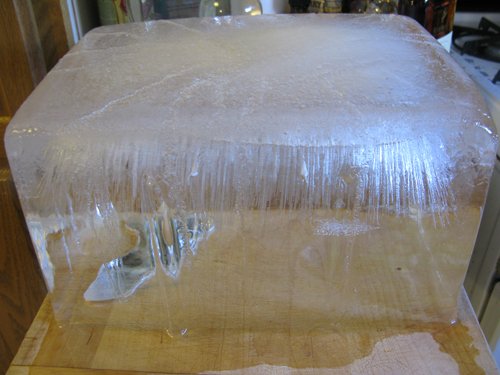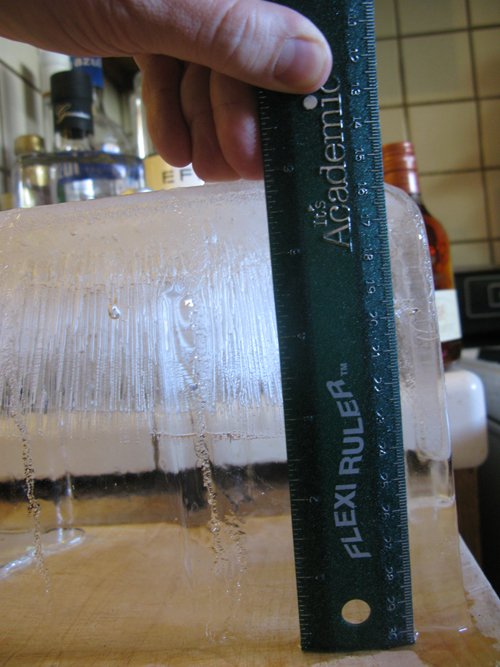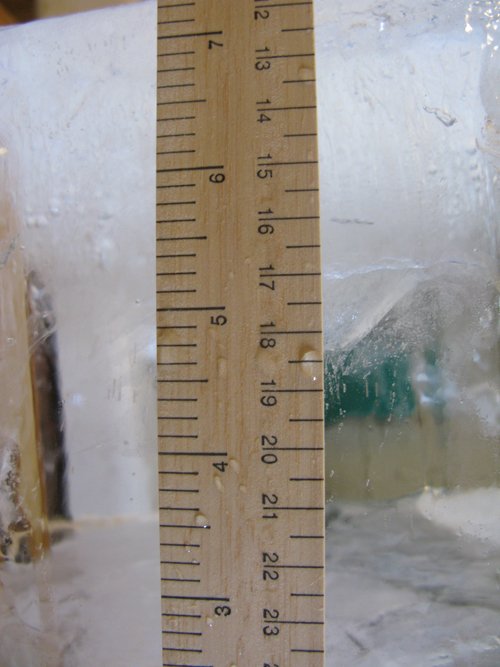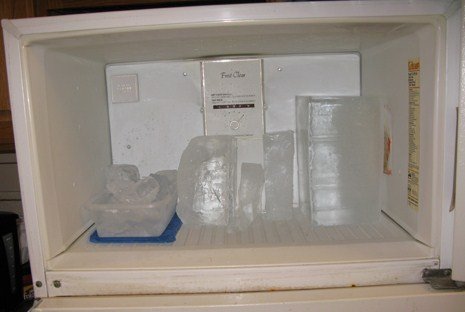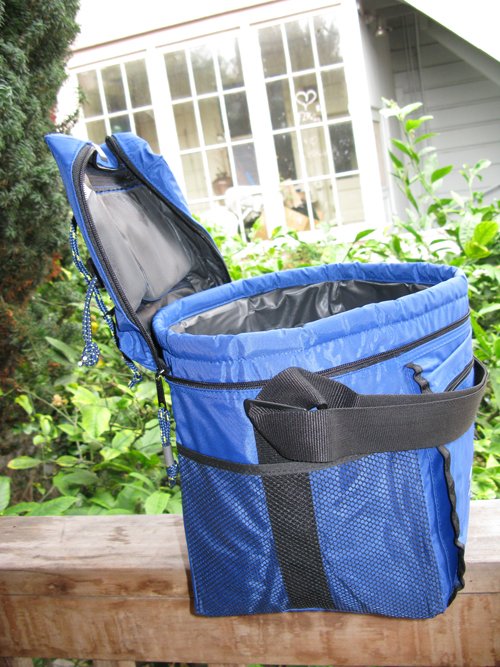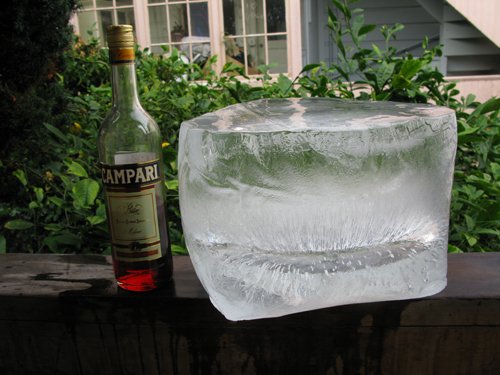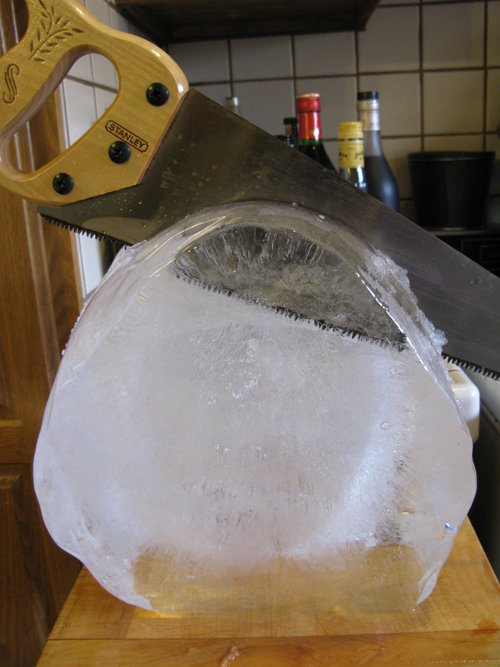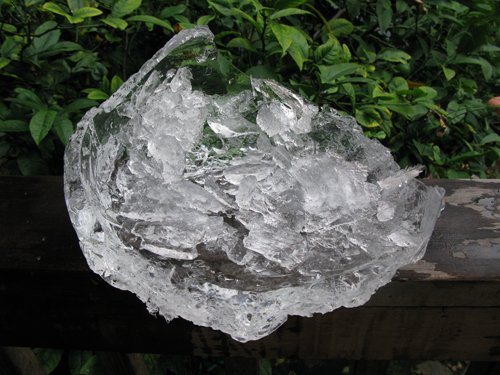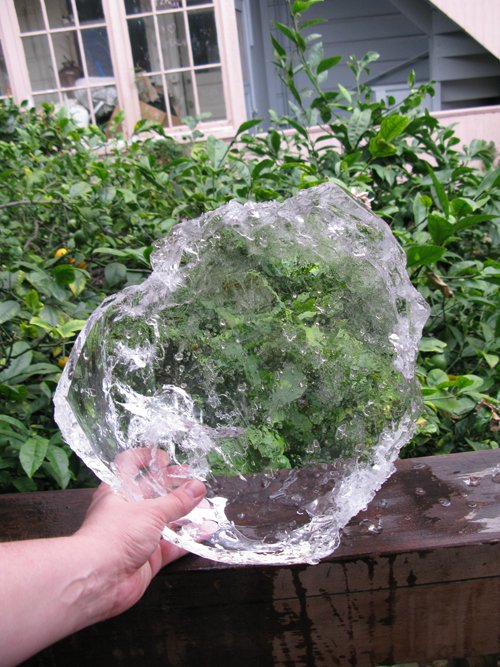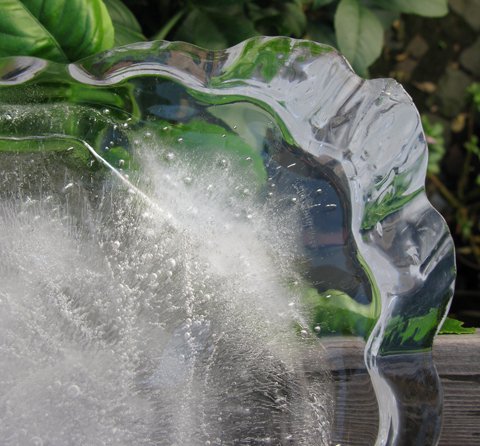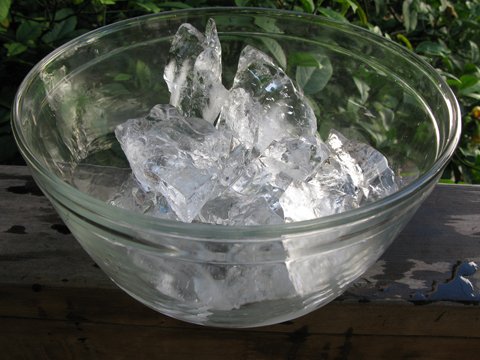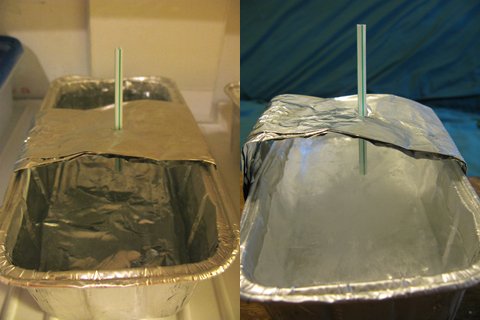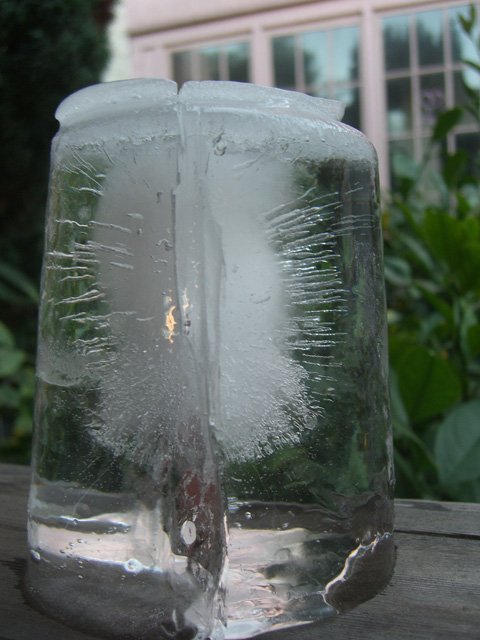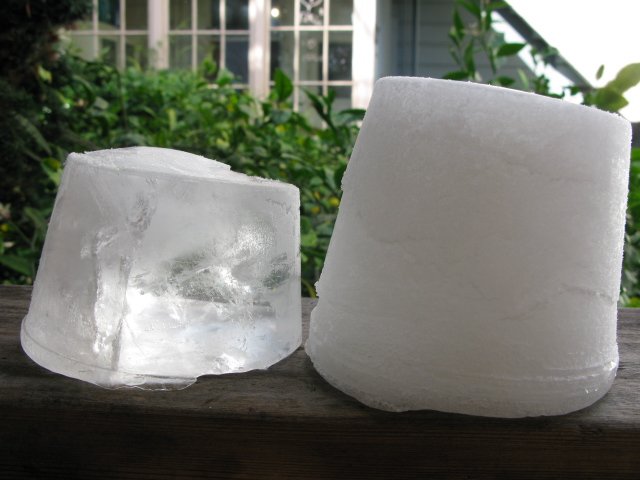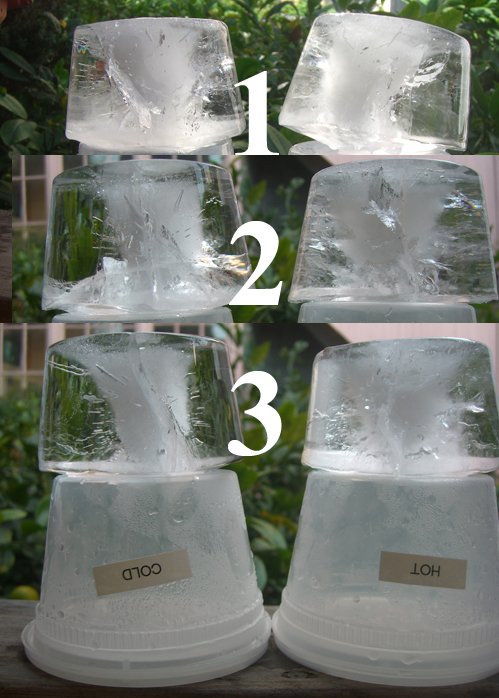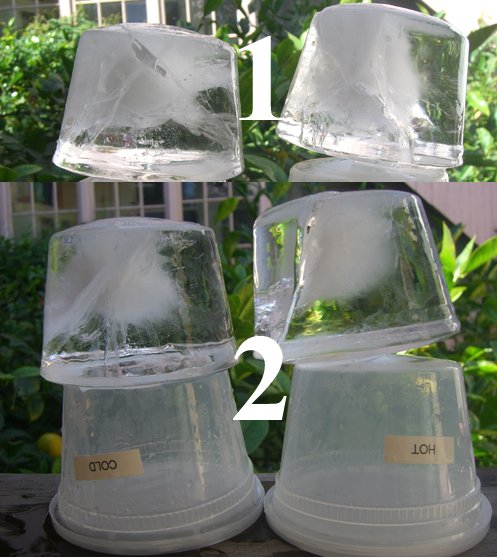As you're probably aware, I've been dabbling in experiments making clear ice at home. [update: An organized index of ice experiments on Alcademics can be found here.] The way I've found that works best is to freeze ice in an Igloo cooler with the top off. (Please read the post before you tell me to boil the water in the comments- it doesn't work.)
This is now how I make all my ice at home- I haven't used trays in months.
Now I am working on ways to best carve ice and also trying to create an ice cube tray that will work in this directional freezing system. I found a method that works that I need to perfect.
Here's what I've done.
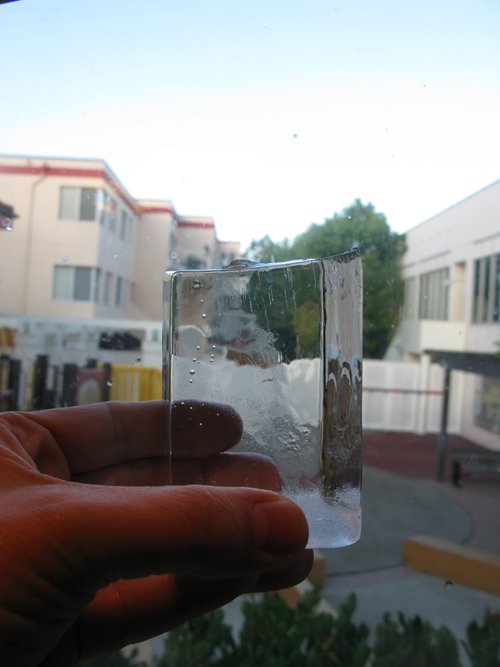
I went down to The Container Store and purchased these plastic gift boxes. They're 2 inches by 2 inches wide (4.5 centimeters) and around 5 inches tall (11.5 cm) with the tops off.
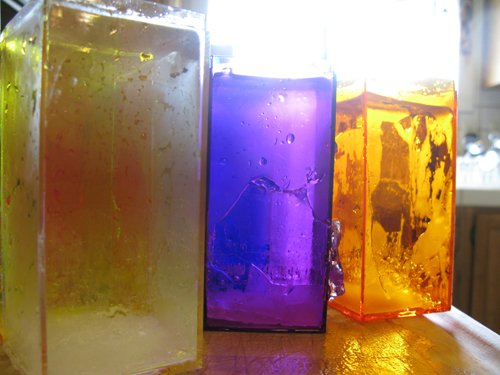
These I put in my Igloo cooler. I've done it with the open top of the container facing up, and also facing down. Facing down works better, actually, because the air in the rectangles gets pushed out the bottom. Facing up, you get a 1cm cloudy patch at the top of the cubes. No big whoop.
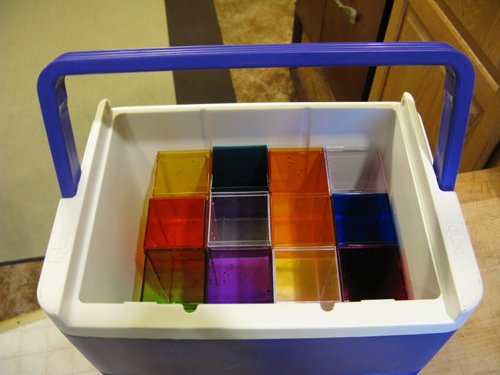
Then I fill the cooler with water and freeze it. It comes out as a block of ice with the cubes stuck in it.
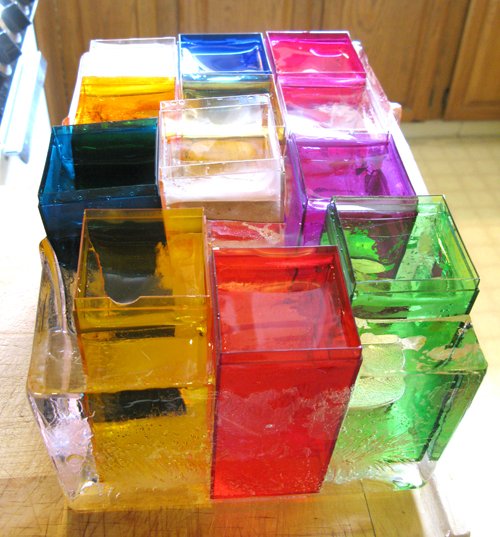
These separate surprisingly easily from the block.

Also surprisingly easy is how the ice pops out of these plastic containers. I just leave them upside-down for a couple minutes and the ice cubes slice right out.
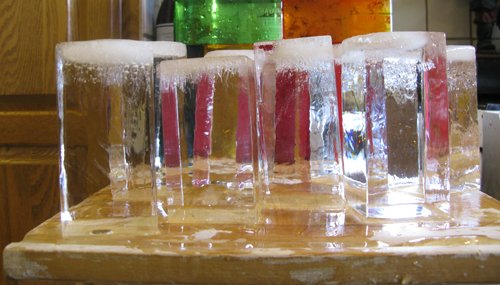
As you can see in the above picture, there is a little bit of cloudiness when the trays are left with the open part facing up. I repeated this experiment with the open part facing down and there was less cloudiness. Either way, there isn't much to worry about as it can be cut off when cutting these big long cubes down to 2 inch by 2 inch by 2 inch ones.
Conclusions:
- These ice cubes are fricking awesome.
- I need to try it with cutting off the bottom of the containers so that they're a rectangular tube rather than a box.
- I think this is actually scalable to make an ice cube tray with some tweaking.
- Hooray!
An index of ice experiments on Alcademics can be found here.

